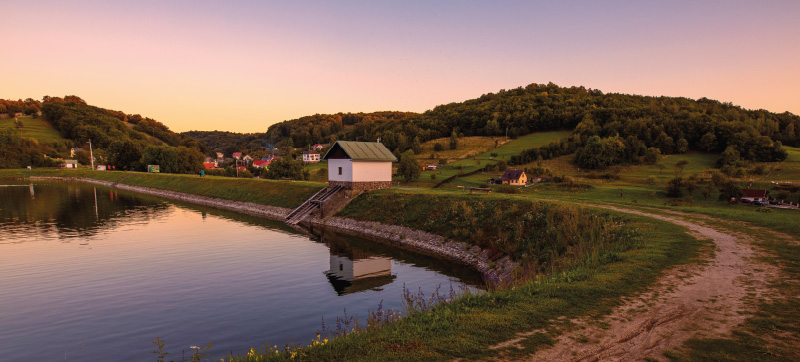
Veľký Kolpašský tajch, Banský Studenec, Slovakia (Photo: Slavomír Červeň, 2021)
Research focused on the evaluation of historical water management objects in the Czech Republic from the point of view of their significance for historic preservation is already in its fifth year. It is broadly conceived interdisciplinary research with the involvement of experts from TGM WRI, Methodological Centre of Industrial Heritage of the National Heritage Institute, Historical Institute of the Academy of Sciences of the Czech Republic, The Silva Tarouca Research Institute for Landscape and Ornamental Gardening, and Faculty of Science, Palacký University Olomouc. The research is carried out within the DG18P02OVV019 project “Historical water management objects, their value, function and significance for the present time” financed by the NAKI II programme of the Ministry of Culture.
Historical water management structures represent one of the segments of industrial heritage. They are proof of society’s technological development and its approach to managing water in the landscape. The team of experts of the aforementioned consortium tried to document this hitherto rather neglected type of structures, identify their value, and compile a set of criteria for evaluating their historical significance as well as for their protection and restoration.
The exhibition at the end of the project will present the main results and findings arising from the five-year research: methodological approaches regarding this part of cultural heritage as well as their application to specific structures. Various types of water management structures will be presented on examples of five model territories within the Czech Republic (the basins of the Svitava, Upper Morava, Moravice, Ploučnice, and the Čáslav region), which differ from each other in terms of historical development, management methods, and physical-geographical conditions: dams, small hydropower plants, water pipes, supply canals carved in sandstone massifs, water supply facilities and many others. For comparison, specific, heritage-protected water management systems in nearby countries will also be presented, such as the UNESCO monuments – Water management system of the town of Augsburg in Bavaria and the Banskoštiavnické tajchy in Slovakia. The authors’ intention is to capture the individual topics in a visually attractive form using maps, reconstructions, and visual material. The exhibition is designed as a mobile one and is intended for the general public. It will also include a catalogue developing the individual topics presented on the exhibition panels and summarizing the project results.
Exhibition schedule:
1–30 October 2022 Hostětín – komunitní centrum Stará škola
1–11 November 2022 Čáslav – Municipal Library
14–20 November 2022 Opava – Silesian Museum
22–27 November 2022 Olomouc – Fort Science (Interactive Science Centre of Palacký University Olomouc)
1–31 December 2022 Brno – Technical Museum in Brno
On behalf of the consortium research team, we cordially invite you to the exhibition.
Miriam Dzuráková (TGM WRI)
Aleš Vyskočil (Historical Institute of the Academy of Sciences of the Czech Republic)
